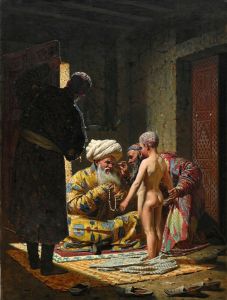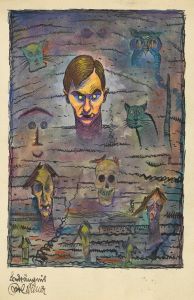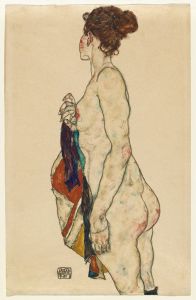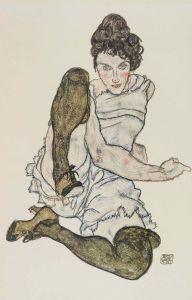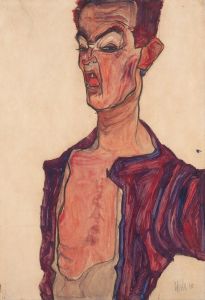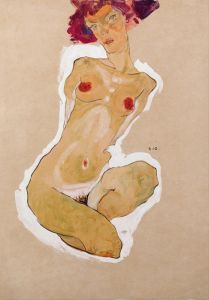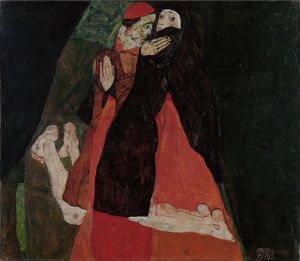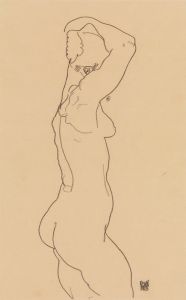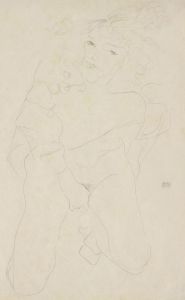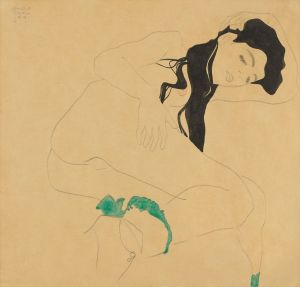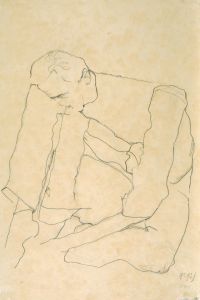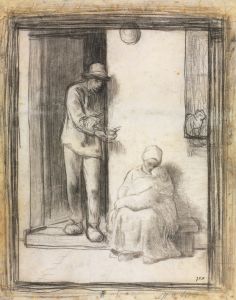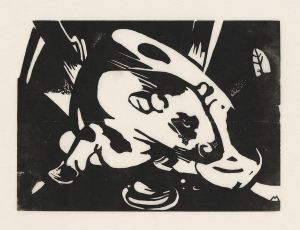
Portrait of a Woman
A hand-painted replica of Egon Schiele’s masterpiece Portrait of a Woman, meticulously crafted by professional artists to capture the true essence of the original. Each piece is created with museum-quality canvas and rare mineral pigments, carefully painted by experienced artists with delicate brushstrokes and rich, layered colors to perfectly recreate the texture of the original artwork. Unlike machine-printed reproductions, this hand-painted version brings the painting to life, infused with the artist’s emotions and skill in every stroke. Whether for personal collection or home decoration, it instantly elevates the artistic atmosphere of any space.
Egon Schiele, an Austrian painter known for his distinctive style and provocative subject matter, created "Portrait of a Woman" during a prolific period in his career. Schiele, a protégé of Gustav Klimt, was a key figure in the early 20th-century Expressionist movement, and his work is characterized by its raw emotional intensity and unique approach to the human form.
"Portrait of a Woman" exemplifies Schiele's ability to capture the psychological depth and complexity of his subjects. Although specific details about this particular painting are limited, Schiele's portraits often feature elongated figures, bold lines, and a striking use of color, which convey a sense of vulnerability and introspection. His subjects, frequently women, are depicted in a manner that challenges traditional notions of beauty and often evoke a sense of discomfort or tension.
Schiele's work was heavily influenced by the socio-political climate of Vienna at the time, as well as his own tumultuous personal life. His art often reflects themes of existential angst, sexuality, and the human condition, which were prevalent in the cultural milieu of pre-World War I Austria. Schiele's portraits, including "Portrait of a Woman," are noted for their psychological intensity and the artist's ability to convey the inner life of his subjects.
The artist's technique involved a combination of precise line work and expressive, often exaggerated, forms. Schiele's use of color was both strategic and symbolic, frequently employing a limited palette to enhance the emotional impact of his work. His portraits are distinguished by their stark backgrounds, which serve to focus attention on the subject and heighten the emotional resonance of the piece.
Egon Schiele's career was tragically cut short by his untimely death in 1918 at the age of 28, due to the Spanish flu pandemic. Despite his brief career, Schiele left behind a significant body of work that continues to be celebrated for its innovative approach and profound emotional depth. His influence can be seen in the works of later artists who sought to explore the complexities of the human psyche through art.
"Portrait of a Woman" remains an important example of Schiele's contribution to modern art, embodying the distinctive characteristics that define his oeuvre. While specific details about the painting's provenance or the identity of the subject may not be well-documented, the piece itself stands as a testament to Schiele's skill in capturing the essence of his subjects and his enduring impact on the art world.





